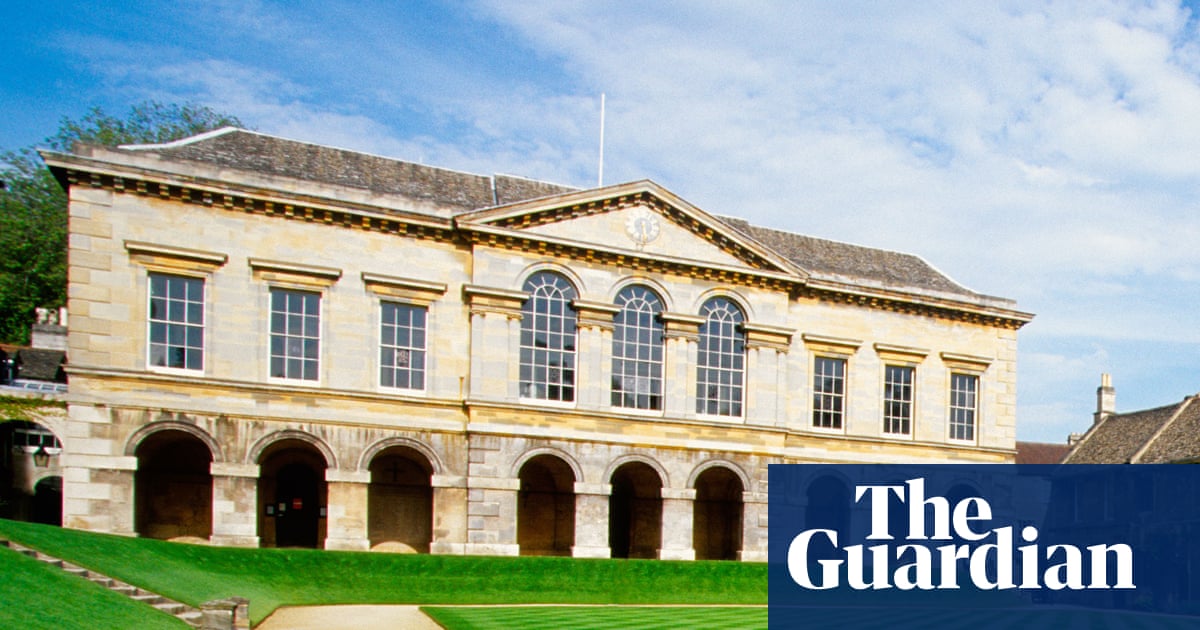Oxford academics drank from a chalice made from a human skull for decades, a book that explores the violent colonial history of looted human remains has revealed.
The skull-cup, fashioned from a sawn-off and polished braincase adorned with a silver rim and stand, was used regularly at formal dinners atWorcester College, Oxford, until 2015, according to Prof Dan Hicks, the curator of world archaeology at the university’sPitt Rivers Museum.
Hicks, whose forthcoming book,Every Monument Will Fall, traces the “shameful history of the skull”, said the cup was also used to serve chocolates after it began to leak wine.
The archaeologist said mounting disquiet among fellows and guests put an end to the senior common room ritual and, in 2019, the college invited Hicks to investigate the skull’s origins, and how it became what he calls “some sick variety of tableware”.
Hicks said debates about the legacy of colonialism usually focused on how the prominent Britons who profited from it, such asCecil RhodesorEdward Colston, had been memorialised by statues, objects or institutions bearing their names.
But he wanted to show how the identities of the victims of colonial rule had often been erased from history because, due to racist ideas of British cultural and white supremacy, they were not considered noteworthy. “The dehumanisation and destruction of identities was part of the violence,” the archaeologist added.
Hicks found no record of the person whose remains the skull-cup was made from, although carbon dating showed the skull is about 225 years old. Its size and circumstantial evidence suggest it came from the Caribbean and possibly belonged to an enslaved woman, he added.
In contrast, the chalice’s British owners were well-documented. The cup was donated to Worcester College in 1946 by a former student, George Pitt-Rivers, whose name is inscribed on its silver rim. A eugenicist, he was interned by the British government during the second world war due to his support for the fascist leader Oswald Mosley.
The cup was part of the lesser-known privatesecond collectionof his grandfather, the Victorian British soldier and archaeologist Augustus Henry Lane Fox Pitt Rivers, who founded the Pitt Rivers Museum in 1884.
The elder Pitt Rivers bought the skull-cup at a Sotheby’s auction that same year. The listing shows it then had a wooden stand with a Queen Victoria shilling inlaid underneath. Silver hallmarks indicate it was made in 1838, the year of her coronation.
The seller was Bernhard Smith, a lawyer and graduate of Oriel College, Oxford, who mainly collected weaponry and armour. Hicks speculated that he received it as a gift from his father, who served with the Royal Navy in the Caribbean.
The Labour MP Bell Ribeiro-Addy,chair of the all-party parliamentary group on Afrikan reparations, said: “It is sickening to think of Oxford dons, sitting in this bastion of privilege, itself enriched by the proceeds of centuries of colonial violence and extraction, swilling drink out of a human skull that may have belonged to an enslaved person and has been so little valued that it has been turned into an object.”
A Worcester College spokesperson said: “In the 20th century, the vessel was sometimes on display with the college’s silver collection and used as tableware. The college does not hold records of how often this was the case, but it was severely limited after 2011 and the vessel was completely removed 10 years ago.
After taking scientific and legal advice, the college’s governing body decided the skull-cup should be stored in its archive “in a respectful manner, where access to it is permanently denied”, the spokesperson added. “As Dr Hicks acknowledges in his book, the college has dealt with the issue ethically and thoughtfully.”
The book also details other skulls looted from colonial battlefields by prominent Victorians, which were displayed in their homes or donated to museums. These include Field Marshal Lord Grenfell, after whom thetower in Kensingtonis named, who dug up the skull of a Zulu commander two years after he was killed by the British army in the battle of Ulundi in 1879.
